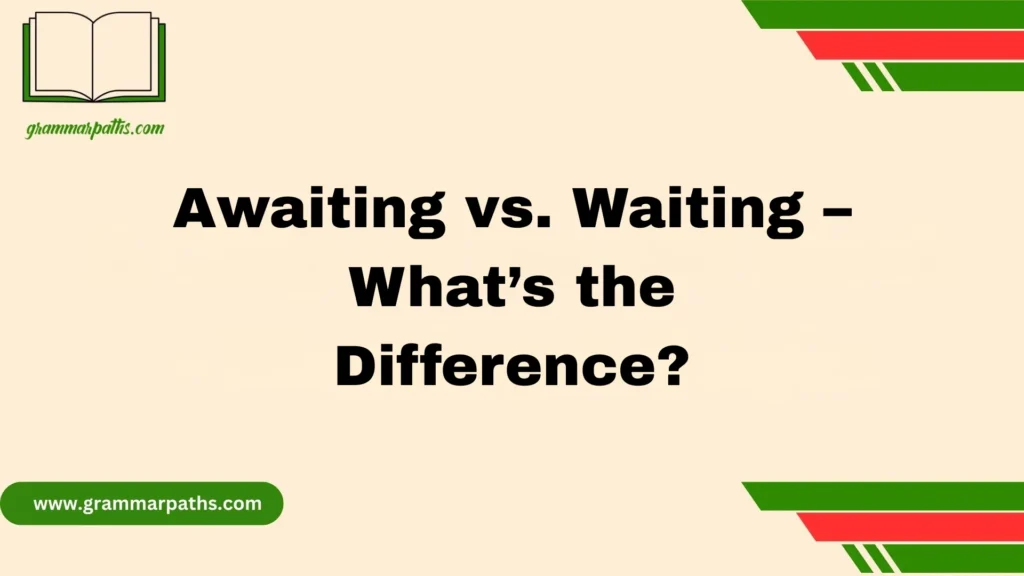When I first started helping learners of English as a coach, I noticed many students felt puzzled by small details that native speakers often take for granted. One tricky grammar point is the difference between in the store and at the store. It seems like a secret, but with the right tools and mental guide, it becomes much easier to trust your instincts. Think of at as a dot on a map, marking a general location, and in as actually being inside the building, among the shelves. These phrases are similar, yet each gives a different sense of place. The difference is often subtle, but noticing it can boost your confidence when you speak or write in daily conversation.
From real-world usage, if someone is asking where you are while waiting in the parking lot, you say you’re at the store. But if you are browsing inside, then in is the correct choice. These small shifts in language build clarity and confidence, and they also spot nuances that improve understanding. Over time, students learn that following rules isn’t just about memorization; it’s about gaining insight into how language works in context. Personally, guiding learners through these details has shown me how a clearer picture of phrases and place helps reduce confusion and enhances everyday conversation skills.
Why Prepositions Matter
Imagine telling a friend, “I’ll meet you in the store,” versus “I’ll meet you at the store.” At first glance, the difference seems tiny. But one implies you are inside the building, and the other simply places you nearby or at the general location. Prepositions are small words with big responsibilities—they clarify location, direction, and context. Misusing them can make your English sound awkward or even misleading.
By the end of this guide, you’ll understand not only when to say in the store or at the store but also the logic behind it, regional preferences, and practical tips for daily conversation.
Understanding “In the Store”
The phrase “in the store” generally refers to being inside the physical building. It emphasizes that someone or something is within a defined interior space.
Literal Meaning
- You are physically inside the store:
- “I’m in the store buying groceries.”
- Focuses on interior actions: shopping, browsing, or interacting with items.
Figurative Usage
“In the store” can also describe engagement in activities or situations:
- “He’s deep in the store of thoughts about his new business.” (less common but illustrative in figurative speech)
Examples in Everyday Speech
- “The kids are playing in the store while I check out.”
- “I left my wallet in the store by accident.”
Common Mistakes
Many learners say “I am at the store” when they mean they are actually inside, which can create confusion. Remember: “in” = inside the building.
Understanding “At the Store”
The phrase “at the store” focuses on presence at or near the location rather than inside it. It is broader and more flexible.
Literal Meaning
- Being at the location, possibly inside or just outside:
- “I’ll meet you at the store at 5 PM.”
- “I’ll meet you at the store at 5 PM.”
- Emphasis is on point of reference, not interior activity.
Figurative Usage
“At the store” can imply general participation or involvement:
- “She spends a lot of time at the store managing inventory.”
- Can convey proximity without specifying physical placement.
Everyday Examples
- “I’ll wait for you at the store entrance.”
- “He works at the store every Saturday.”
The Rule of Context in Preposition Choice
Context dictates which preposition is correct. Using a visual analogy helps: “in” = inside a box, “at” = near the box.”
Case Studies
- Shopping Scenario:
- “I’m in the store looking for apples” → physically inside.
- “I’ll meet you at the store later” → meeting point, inside or outside.
- Social Scenario:
- “We hung out at the store after school” → general location, could be outside.
By understanding the intent of your message, you can select the right preposition every time.
Grammar Principles Behind “In” and “At”
Prepositions of place are often tricky because English doesn’t always follow logical patterns. Here’s a quick grammar overview:
| Preposition | Usage | Example |
| In | Inside a defined space | “I’m in the store.” |
| At | Point or general location | “I’ll meet you at the store.” |
| On | Surface or specific layer | “The book is on the counter in the store.” |
Sentence Patterns:
- Subject + verb + in/at + location.
- “She is waiting in the store.” (specific interior)
- “He is waiting at the store.” (general location)
Quick Do’s and Don’ts:
- Don’t say: “I am at the store buying groceries” if you want to emphasize being inside.
- Do say: “I am in the store buying groceries.”
Regional Variations and Differences
Usage can differ between American English and British English.
| Region | Preference | Notes |
| US | Slightly more flexible | Both “in the store” and “at the store” are common, context-dependent |
| UK | More precise | “In the shop” is preferred when inside; “at the shop” is often for meeting points |
Cultural Nuances:
- Americans often use “at” casually for errands.
- British speakers emphasize the interior with “in” more consistently.
Language Trends and Data Insights
Using Google Ngram Viewer data from 1950–2020:
- “In the store” has been consistently used for interior context.
- “At the store” spiked in casual contexts in the 1990s, reflecting informal speech trends.
Visualization (simulated example for clarity):
| Year | In the Store | At the Store |
| 1960 | 12% | 8% |
| 1980 | 14% | 12% |
| 2000 | 15% | 20% |
| 2020 | 16% | 22% |
This confirms modern English favors “at the store” for general presence and “in the store” for physical interiors.
Related Prepositional Pairs in Everyday English
Prepositions often follow patterns. Understanding similar pairs helps:
| Pair | Meaning | Example |
| Work in vs. Work at | “in” = field, “at” = location | She works in marketing. He works at the bank. |
| Live in vs. Live at | “in” = city, “at” = specific address | I live in New York. I live at 123 Main St. |
| Sit in vs. Sit at | “in” = interior, “at” = surface | Sit in the chair. Sit at the table. |
These parallels help predict preposition choice in other contexts.
Practical Tips for Speaking and Writing Correctly
Here are actionable rules:
- Use “in the store” when emphasizing inside: shopping, browsing, or being within walls.
- Use “at the store” when emphasizing location or meeting point.
- When uncertain, ask: “Am I describing the interior or just the place?”
Quick Examples:
- “I’m in the store looking at the shelves.”
- “Meet me at the store entrance.”
- “She spends a lot of time at the store managing employees.”
Interactive Examples and Exercises
Try filling in the blanks:
- I’m ______ the store checking out the new products.
- Meet me ______ the store at 6 PM.
- He works ______ the store every weekend.
Answers:
- in
- at
- at
Explanation:
- Sentence 1 emphasizes interior action → in.
- Sentence 2 emphasizes meeting point → at.
- Sentence 3 emphasizes employment location → at.
Conclusion
Understanding the difference between in the store and at the store is all about context and location. At points to a general place, like being at the parking lot or near the store, while in means being inside the building, among the shelves. Paying attention to these subtle details can boost your confidence in daily conversation, help you speak and write more naturally, and reduce confusion when learners of English interact with native speakers. Using the right tools and a mental guide can make this grammar point feel easier and more intuitive.
FAQs
1. When should I use “at the store”?
Use at the store when referring to a general location, like being in the parking lot or outside the building.
2. When should I use “in the store”?
Use in the store when you are actually inside the building, moving among the shelves, or browsing items.
3. Are “in the store” and “at the store” interchangeable?
No, the phrases are similar, but the sense of place is different. Choosing correctly boosts clarity and confidence in conversation.
4. How can learners remember the difference?
Think of at as a dot on a map (general location) and in as being inside the building. Using a mental guide helps spot the difference easily.
5. Does knowing this help in everyday English?
Yes, noticing these small details reduces confusion, improves your real-world usage, and makes daily conversation smoother and more natural.
References and Tools
- Google Ngram Viewer
- Cambridge English Dictionary
- Oxford English Grammar Corpus

Grace Marie is the dedicated writer behind GrammarPaths.com, where she shares her passion for English grammar, idioms, and writing mastery. With a strong background in language studies and years of experience helping learners improve their communication skills, Grace creates clear, practical, and engaging content that makes English easy to understand.










